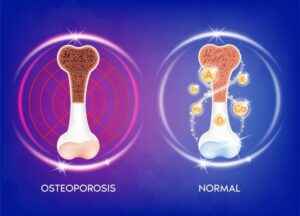Asherman syndrome or intrauterine adhesions is a rare gynecological disease that affects a woman’s reproductive system. In this condition, scar tissue forms in the uterine cavity. The walls of the uterus become thick and take up more space than usual – and therefore, the size of the uterine cavity appears smaller than usual. In some, severe cases, the walls of the uterus fuse together.
Women who develop this very rare condition have difficulties in conceiving and the potential risk of miscarriage is very high. Though getting pregnant may be possible for some women, the thick uterus walls due to adhesions don’t provide enough room for the fetus to grow. Therefore, the risk of miscarriage increases in women with this condition.
Women who develop this condition may also have a high risk of developing other conditions such as:
Placenta previa: In this condition, the cervix opening is blocked by the placenta. It may lead to intermittent bleeding throughout pregnancy or may have severe bleeding during pregnancy and childbirth. The risk of premature birth and preterm delivery also increases if a woman has Placenta previa.
Placenta accreta: In this condition, the placenta attaches deeply to the uterine wall. Even after birth, a part still remains attached causing excess bleeding.
What are the causes of Asherman Syndrome?
Intrauterine adhesions cause: Any procedure performed to remove a retained placenta after delivery or an elective abortion or trauma to the uterine walls after a surgical procedure can leave a scar that may develop into adhesions.
Other surgical procedures which involve excessive meddling with the endometrial cavity such as dilation and curettage (D&C), rarely cesarean section, or fibroids removal surgery can also cause uterine adhesions. Asherman syndrome is generally not a genetic condition.
Symptoms
The symptoms include irregular or infrequent periods or not having periods (amenorrhea), pelvic pain or severe cramping, and abnormal uterine bleeding.
Irregular or infrequent periods – the reason could also be something else. However, see your gynecologist if your periods suddenly become irregular. In some cases, periods may be regular but getting pregnant may be difficult. Whatever may be the case, if you have recurrent miscarriages or if you are facing difficulty in conceiving, you must see your doctor.
Diagnosis of Asherman Syndrome
An experienced gynecologist takes a complete medical history and performs a thorough physical examination. She will order blood tests to rule out other conditions with similar symptoms – and also order an ultrasound to check the thickness of the uterine wall.
Hysteroscopy: In this procedure, a hysteroscope a thin tube-like instrument with a light mounted at the tip is used to look inside the uterus and check for scarring.
Treatment
Operative hysteroscopy is the procedure to treat uterine adhesions. It is a surgical procedure that is minimally invasive. Small surgical instruments attached to the end of the hysteroscope help in removing intrauterine adhesions. Scar tissue is very carefully removed during this procedure and a catheter or a copper -t is placed temporarily inside the cavity to prevent adhesions. The procedure is performed under general anesthesia. The gynecologist will prescribe antibiotics and estrogen tablets to prevent infection and improve the lining of the uterus. There is a possibility of adhesions recurring following treatment – therefore, follow-up appointments and care are important. The gynecologist will check the effectiveness of the treatment with a repeat hysteroscopy to ensure that the uterus is free from adhesions.
Bottom Line
If you have recurrent miscarriages owing to Asherman syndrome, you must see your gynecologist & obstetrician to have your pregnancy monitored. If you are unsure about your condition, meet me for a complete physical examination and evaluation of your symptoms and medical history.





